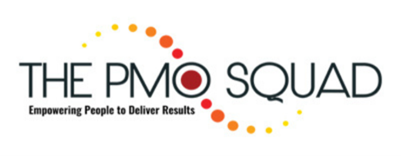By The PMO Squad
August 21, 2024
Building a Project Management Office (PMO) is a complex endeavor, often underestimated in its scope and challenges. Many organizations task leaders who have never built a PMO before with this monumental responsibility. This frequently leads to suboptimal outcomes and even outright failure. To understand why, it’s essential to delve into the importance of experience, deep discovery of the current state of project delivery, and securing executive support and organizational buy-in for change.
The Importance of Experience
Experience is a critical factor in successfully establishing a PMO. Experienced PMO leaders have a nuanced understanding of the intricacies involved, from defining the PMO’s role and scope to implementing best practices and methodologies that will actually work. They are familiar with the common pitfalls and challenges, such as resistance to change, resource constraints, and aligning the PMO with organizational strategy. Without this experience, leaders are more likely to overlook crucial elements, leading to a PMO that fails to deliver its intended benefits.
Deep Discovery of Current State Project Delivery
Before building a PMO, it’s vital to conduct a thorough discovery of the current state of project delivery within the organization. This involves understanding existing processes, tools, and pain points. A deep discovery phase helps in identifying gaps and opportunities for improvement. It also ensures that the PMO is tailored to address specific organizational needs rather than adopting a one-size-fits-all approach. This groundwork is crucial for creating a PMO that can effectively enhance project delivery and drive business success.
Executive Support and Organizational Buy-In
Securing executive support and organizational buy-in is paramount for the success of a PMO. Executive sponsorship provides the necessary authority and resources to implement changes and overcome resistance. Leaders must communicate the strategic value of the PMO, demonstrating how it will contribute to achieving business objectives. This involves presenting a clear vision, benefits, and a roadmap for implementation.
Organizational buy-in is equally important. Change management strategies should be employed to engage stakeholders at all levels. This includes regular communication, training, and involving key personnel in the planning and implementation phases. Building a culture that embraces continuous improvement and values the PMO’s role in project success is essential for long-term sustainability.
Conclusion
Building a PMO is a challenging but rewarding endeavor when approached with the right expertise and approach. Experience plays a crucial role in navigating the complexities of PMO implementation. Conducting a deep discovery of the current state of project delivery ensures that the PMO is tailored to the organization’s needs. Securing executive support and organizational buy-in is essential for overcoming resistance and achieving sustainable success. By focusing on these critical factors, organizations can build a PMO that drives efficiency, enhances project delivery, and contributes to overall business success.
If you’re looking to do this on your own, check out this PMO Build Checklist with the step by step approach to doing it right. However, if you’re looking for assistance from industry experts, The PMO Squad can help. Inquire about a PMO Discovery here.
The PMO Squad
The PMO Squad started in 2013 by global PMO Influencer Joe Pusz, PMO Joe. Joe had been a PMO Leader with various organizations across multiple industries and various size companies during his corporate career. The entrepreneurial spirit prompted Joe to start The PMO Squad to help serve clients looking to improve their Project Management capabilities and performance.



